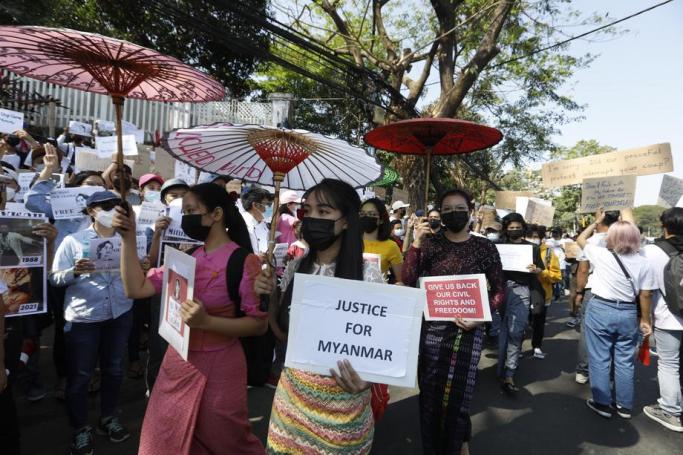For Suu Latt, her mother and father proved just as serious a hurdle to going out on the streets to protest against the Myanmar military coup as she faced from the security forces.
Suu Latt, an alias, has taken to the mean streets of Yangon in a number of protests since the February 2021 coup but to some extent has been constrained by her family.
“At the beginning of the coup, the hardest task to participate in the anti-military protests was to get approval from my parents,” Suu Latt told Mizzima, preferring to keep her identity secret, given the dangers posed by the Myanmar junta authorities, even though public demonstrations have died down in Yangon.
“As my parents and grandparents had lived through the cruel successive military regimes, such as General Nay Win and General Saw Maung, they are very afraid of the military. Politics is not their business. Thus, they forbid girls from participating in the protests, while they do not take the same attitude with boys,” she said.
As Suu Latt notes, her family have a poor impression of girls as they claim they are incapable of doing anything in the protest.
“They also think if something happens, it is difficult for boys to save girls first,” she added.
Suu Latt laments that gender discrimination in Myanmar is a result of her parents’ generation and the ingrained beliefs of the community.
“To participate in the protest, there were some days I hardly got permission from my parents, and some days I sneaked out furtively from my house. Later, when the military junta violently dispersed the anti-coup demonstration, we, as women, could not fully participate,” she said.
Amidst the smoke, rubber bullets, and live ammunition in confrontations between the demonstrators and the security forces, there were worries about the welfare of the women stepping up to help to the extent that young men would get angry seeing young women on the frontlines.
“When we did something without their consent, we were sometimes rebuked by them; those who are not our acquaintances. Personally, I think this is because my country discriminates against girls … We also have not paid attention to building up our physical strength as well,” Suu Latt said.
As the demonstrations moved from weeks into months, the intensity of the confrontations on the streets of Yangon became more acute, with running battles. The gender mix began to change.
At the beginning, there appeared to be just as many young women protestors as men, even some middle-aged people, and children.
But as the number of injuries, deaths and arrests picked up, young women like Suu Latt had to step back.
“I have some friends who took up arms to fight against the military coup,” Suu Latt said, referring to those you have joined the resistance in the jungles and ethnic areas. “Occasionally, when I got a contact, they said although they are only youths, as girls, they have to be more cautious in an unfamiliar place with boys who are not acquaintances.”
She said they also expressed the difficulty they faced with having mental problems as girls.
“As for me, as someone who could not go against my parents’ will, I was not allowed to take up arms like my friends. However, I am participating in the revolution as much as I can,” Suu Latt said.












